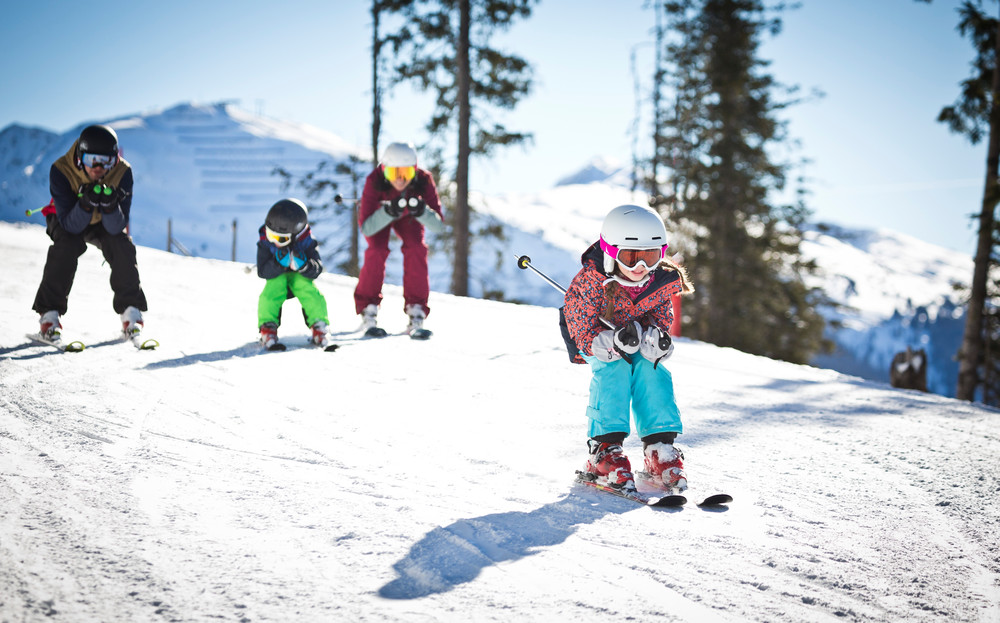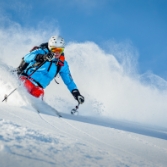News and Info
Essential Ski Gear for Your Winter Holiday Packing List
Essential Ski Gear for Your Winter Holiday Packing List, with insider knowledge from our friends at European Snowsports:

If you’re going skiing for the first time this winter, or if you go every year but always forget an essential piece of kit, we’re here to help! Ski gear can be a tricky one; conditions are always changeable and smaller bits of kit are easy to leave in a drawer at home. But with our handy kit list, you can make sure you’ll always have the absolute essentials to hand.
Whilst you are able to rent almost anything you need; like skis, boots and in some cases, outerwear (as we do here at Mountain Air), trust us, there’s some kit that’s better bought yourself! Even if you don’t manage to get hold of it before you leave (or arrive to realise you’ve left it in the bottom of your wardrobe), all the following gear is readily available in resort:
Socks
ES -
Socks should be first on your packing list as they’re so easily forgotten. Take AT LEAST two pairs with you; even if you go for full Merino, you won’t want to put on a pair of stiff, sweaty socks on the sixth day of your holiday. Make sure your socks are either thick or thin, not an obscure collection of both. That’ll wreak havoc with your feet in ski boots.
MA -
At Mountain Air we have a selection of high quality socks from Falke and Ice Breaker. We would recommend spending a little extra on getting Merino socks as they will keep your feet drier for longer. Wet feet means cold feet and that’s no fun at all at the end of the day.
Good Gloves
ES-
Even if you have fantastic circulation, your fingers are the outermost extremities of your body and they’re usually the first thing to get cold. Mittens are great if you have poor circulation because they allow your fingers to stay close and share heat like huddling penguins. One thing is for sure though, don’t scrimp on gloves – they can be the difference between a good or bad day. Make sure you dry them out at night, too. No one likes putting on damp gloves in the morning.
MA –
We could not agree more! Applying the same logic to the rule as with your feet, your hands are right up there with the first things that are likely to get cold, so it’s worth spending the money to keep them protected. A good pair of leather gloves will last for years and keep your hands toasty and warm for a long time, so invest well. We recommend brands like Hestra or Black Diamond and a mix of leather and natural fibres will be both durable and warm.
Glove Liners
ES-
If it’s cold, your fingers will get cold. If it’s hot, your hands will sweat and THEN your fingers will get cold. Have some glove liners in your pocket ready for when that happens. They create a lovely warm barrier between your fingers and the outside world. I might even go so far to say it’s worth having two pairs in the event that you misplace a pair (easily done) or forget to dry them at night.
MA-
Liners are also useful in every day life, even when you’re not in the mountains, so it’s not something you will only use once a year. You can use them while on the bus in December or keep them in your car for frosty mornings. We stock Icebreaker liners in a variety of styles and sizes.
Decent Thermals
ES –
Never underestimate the importance of a good set of thermals. Skiing is such a stop-start activity that you could be sweating it out in the powder one minute and freezing on the chairlift the next. It’s really important to have some good thermals made from technical (preferably natural) fabric that help regulate your body temperature. Try a few different thermal tops in a few different fabric weights so you can layer up or down according to the conditions. Don’t neglect your thermal bottoms either. Cold knees are no fun.
MA –
Top tip, is to get ¾ length bottoms, so that they don’t go inside your boot and create pressure where it is not wanted and possibly lead to a blister. We have some great Mammut ¾ length thermals.
Goggles
ES-
If you’ve never been skiing before, you might think you can get away with just wearing sunglasses for a week. I found out the hard way that you can’t. When it’s snowing and windy the puny lenses of a pair of sunglasses will do nothing to protect your eyes. A good pair of goggles will improve your vision in the snow no end and feel much more comfortable with a helmet.
MA –
Apart from the practicalities of wearing a helmet and sunglasses, it’s simply just not a good look! We would recommend finding a pair of goggles that fits the shape of your head and works well with your helmet- you don’t want a ‘punter gap’ (the space between your goggles and the start of your helmet). Big goggles offer the best visibility and look for goggles that you can change the lens so that you can adapt to the various conditions that the mountain can throw up. We have a fantastic range of goggles from the likes of Dragon Alliance and Oakley.
Face Protection
ES –
This part covers sun cream, neck tubes, head bands and / or hats. When the sun is strong or the wind is fierce, you don’t want to leave your skin exposed for too long. Goggle tan, sun burn and wind burn are not good looks to return home with. Plus, all these items are really small and can be kept in your pocket in case the weather turns. If the weather is really bad, a second neck tube is advisable – that way you can put on a nice dry one after lunch!
Bonus tip: always try on your helmet (rental or your own) with your chosen face protection ensemble and goggles before you hit the slopes to make sure it’s comfortable.
MA –
This does not need to be anything fancy, just a simple buff or neck tube is perfect, just leave it down over your neck when you are warm and then you can easily pull it up when you start to get a cold nose on the chair lift.





